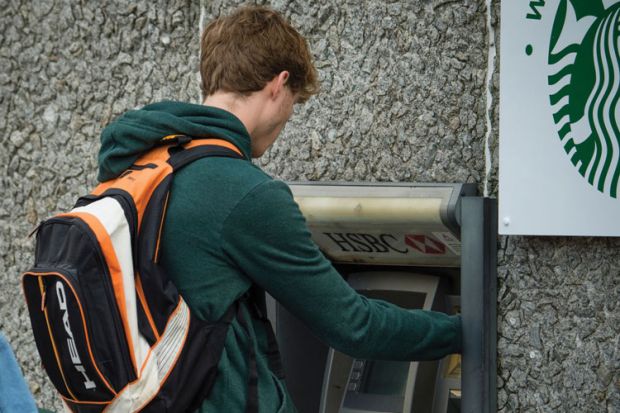Significant variation in the value of bursaries offered by universities means that they can exacerbate rather than reduce inequality, an academic has warned.
Gill Wyness, lecturer in the economics of education at the UCL Institute of Education, said that students from relatively wealthy backgrounds can receive more aid than those from poor families simply because of the university they attend.
In a paper presented at the institute last week, she analyses the financial support available at 22 universities over a five-year period and finds that bursaries awarded by Russell Group institutions were twice as generous as those provided by others.
Bursaries offered by the large, research-intensive universities in the Russell Group averaged £1,250 annually, compared with £680 outside the mission group.
In part, this reflects the fact that, in Dr Wyness’ sample, only 28 per cent of students recruited by Russell Group institutions were eligible for bursaries, compared with 57 per cent at other institutions.
Given the highly selective nature of Russell Group institutions, this meant that the poorest, most able students received the most financial support. Across the sample, these students received an average of £1,692 in aid each year, compared with £417 for the richest, least able students.
But Dr Wyness says that this is by accident, not design. She says that, for students from similar income backgrounds, there is a “substantial range” of bursaries on offer, depending on which university they attend.
Students with parental incomes below £10,000 a year could receive as little as £350 at one institution and as much as £2,800 at another, she says.
Equally, students with parental incomes of more than £50,000 a year were eligible for more than £1,000 a year at one university, substantially more than disadvantaged students at other institutions.
Dr Wyness told Times Higher Education that her findings were a cause for concern in light of the government’s decision to abolish maintenance grants, leaving bursaries as the only non-repayable source of financial support for students.
“On average, bursaries are going to the brightest students, but this is not really how the system is designed, it’s more of an accident of the system because the brightest students tend to get into the best universities,” Dr Wyness said.
“There will be bright students from poor backgrounds who don’t go to the best universities; they may go to university near their home so they may end up somewhere not as elite – and they will end up with a lot less money than someone going to a much better university.”
Dr Wyness’ findings are based on data for 2006-11, before the introduction of £9,000 tuition fees, but she said that Russell Group institutions still offer significantly more valuable bursaries.
This year, students at Imperial College London with parental incomes of between £55,000 and £60,000 are eligible for bursaries of £500, the same amount on offer to students at Liverpool John Moores University from households earning less than £25,000. At Imperial, students with family incomes below £25,000 are eligible for £6,000 each year.
Dr Wyness said the best solution would be to have a national system of bursaries, allocated on the basis of parental income. This, she said, would stop students “falling through the cracks”.
后记
Print headline: Variation in bursaries’ value ‘exacerbates inequality’




